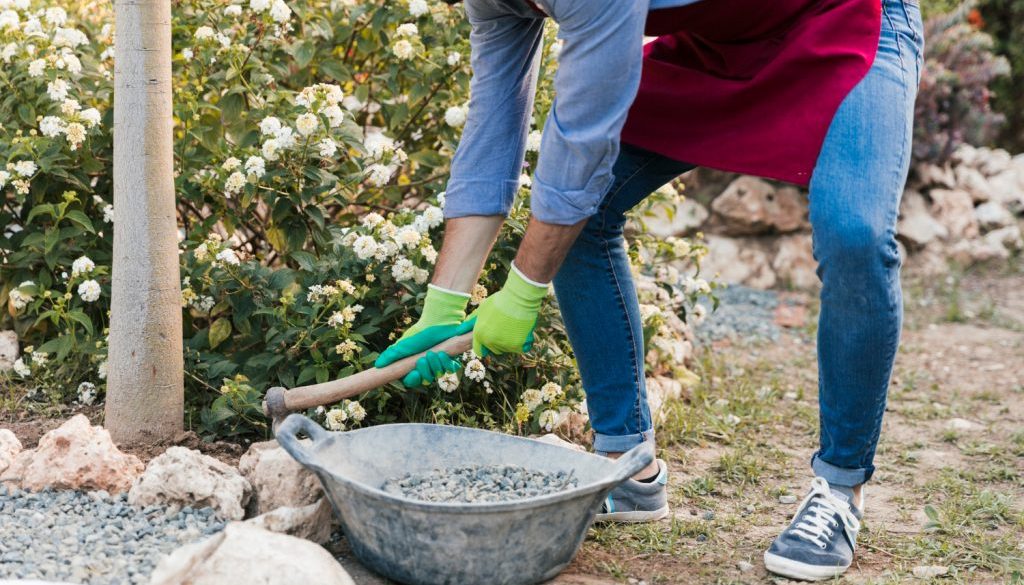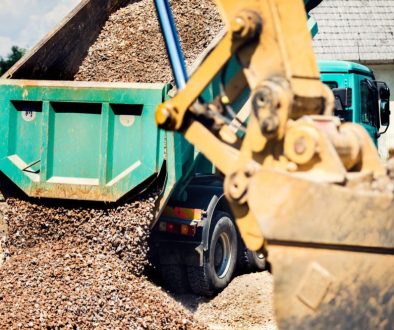When it comes to crafting the perfect garden, using recycled aggregates offers a practical and eco-friendly solution to many design challenges. These recycled materials not only help reduce environmental impact but also add a unique aesthetic appeal to your garden. With growing concerns about sustainability and resource conservation, residents in Cheshire, UK, are increasingly leaning towards garden designs that are both beautiful and responsible. Incorporating recycled aggregates into your garden design not only supports these goals but also results in a more distinctive and personalised outdoor space.
Imagine transforming tricky areas of your garden with ease. Whether you’re addressing poor drainage or looking to create an inviting pathway, recycled aggregates can be your secret weapon. They are versatile, durable, and using them contributes to a greener planet. As more people become aware of these benefits, recycled aggregates are quickly gaining popularity in garden design. This trend is not just about following a fad, but about making conscious choices for the future while enhancing the beauty of your immediate surroundings.
Understanding Recycled Aggregates
Recycled aggregates are materials like crushed concrete, stone, and gravel that are reclaimed from old construction projects. Instead of discarding this rubble, it is processed and reused, often fulfilling jobs just as well as fresh materials do. This win-win situation offers a sustainable alternative to traditional aggregates.
There are several types of recycled aggregates available for garden use:
– Crushed Concrete: Ideal for creating paths, pathways, and bases, offering a robust structure.
– Recycled Gravel: Perfect for drainage projects, helping excess water flow away from areas prone to pooling.
– Reclaimed Stone: Adds a rustic touch for decorative purposes or can be used to build borders and small walls.
Choosing recycled aggregates means you’re supporting sustainable practices by reducing the need to extract new resources. This not only conserves natural materials but also reduces waste. By choosing to incorporate them into your garden design, you are taking a significant step towards helping the environment while keeping garden costs manageable. Recycled aggregates are accessible, effective, and a great way to garden with a conscience. As more gardeners find success with these materials, they continue to grow in popularity, inviting more homeowners to explore their use creatively.
Common Garden Design Problems and How Recycled Aggregates Can Solve Them
Gardens often face several challenges, with drainage being one of the most common. Water can pool after a heavy rainstorm, causing a muddy mess and potentially damaging plants. Recycled aggregates, like crushed concrete or gravel, provide an excellent way to manage drainage efficiently. By improving the garden’s drainage system with these materials, water flows more easily away from problem areas, keeping your garden healthy and lush.
Pathways are another area where recycled aggregates shine. They offer a stable, attractive solution for creating footpaths that guide visitors around your garden. Choosing materials like reclaimed stone can lend a charming, rustic look while being strong enough to withstand regular foot traffic. Using aggregates helps define spaces within the garden, making it more accessible and aesthetically pleasing.
For those seeking to protect and nourish plants, using aggregates as mulch can be beneficial. A layer of recycled gravel around plant bases helps retain soil moisture and reduce evaporation. It also acts as a barrier against weed growth, ensuring plants receive all the nutrients from the soil without competition.
Practical Tips for Incorporating Recycled Aggregates into Garden Design
Integrating recycled aggregates into a garden doesn’t have to be daunting. Here are some practical steps:
1. Plan Assess Your Garden’s Needs: Identify areas such as paths, borders, or drainage spots where aggregates would be best used.
2. Select The Right Material: Choose the appropriate type of aggregate based on the specific garden function, whether it’s drainage improvement or pathway creation.
3. Prepare The Area: Clear the designated spot of debris and level it out before applying aggregates for optimal results.
4. Implement Creative Ideas: Use aggregates in inventive ways like building rock gardens or raised plant beds, offering both functionality and visual appeal.
5. Regular Maintenance: Check paths and mulched areas regularly, replenishing the aggregates as needed to keep them looking fresh and effective.
By following these tips, you can make your garden not only more beautiful but also much more functional, bridging the gap between aesthetics and practicality.
Local Resources and Support
Finding recycled aggregates locally can simplify the process and support your community. Many places provide these materials, making it easier to start your garden projects with minimal hassle. Local suppliers often have a wide choice of options to suit various garden styles and needs, ensuring you find the right fit.
Utilizing a nearby supplier can also mean fresher materials and faster delivery times, making your project timeline smoother. It could be worthwhile to explore local suppliers for detailed guidance on which aggregates best suit your specific needs and area conditions. Engaging with local resources can make your garden more sustainable and connected to its community.
Bringing It All Together for a Sustainable Garden
With recycled aggregates, you can address common garden design challenges while championing sustainability. These materials offer a practical and beautiful way to enhance your garden’s design, turning potential problems into creative opportunities. As more gardeners take this approach, the positive impact on the environment will only continue to grow.
Choosing eco-friendly options allows you to shape a garden that aligns with environmental principles while still meeting your aesthetic goals. This combination of beauty and responsibility can transform your garden into a space you’re proud to share. By embracing sustainability in your garden, you’re not just planting seeds in the ground but sowing the values of a greener future.
If you’re looking to hire a skip in Hanley, partnering with a sustainable provider like Enviro Skip Hire can make a big difference in your garden transformation. Efficient waste management combined with the use of recycled aggregates allows you to build a greener, more visually appealing outdoor space.




